
In this week’s Claire Chat’s video I talk about my recent visit to London Charterhouse and the history of the site. I hope you enjoy the talk and the photos.
[Read More...]
In this week’s Claire Chat’s video I talk about my recent visit to London Charterhouse and the history of the site. I hope you enjoy the talk and the photos.
[Read More...]
In 1571, the Ottoman Turks were a proven naval force. Leading up to 1571, the Venetians had attempted to make peace with the Turks to end their expansion through the Mediterranean. Turkish ships would harry the Venetians and, through Barbary pirates, occasionally raid the coasts of France, Spain and Italy. Counter to that, the Christian Knights of St John of Jerusalem effectively behaved as pirates in their attacks and raids on Turkish ships and ports. The Turks eventually attacked and gained control over Rhodes, where the Knights had their base. In 1570, the Turks then turned their attention to Cyprus, a Grecian island in the Mediterranean controlled by the Venetians. After the Venetians refused to give up control of the island, the Turks invaded.
[Read More...]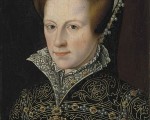
On 5th October 1553, the first Parliament of Mary I’s reign met. It repealed the “treason act” of Edward VI’s reign, passed an act declaring the legitimacy of Mary I, repealed the religious legislation of Edward’s reign, and reinstated the Mass in Latin, celibacy of the clergy and ritual worship. It was as if the reformation of Mary’s half-brother’s reign had never happened.
[Read More...]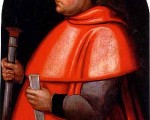
On this day in history, 3rd October 1518, Cardinal Wolsey sang a mass to Henry VIII and the French ambassadors at St Paul’s Cathedral in celebration of the treaty agreed between the two countries the previous day, the Treaty of London or Treaty of Universal Peace. The King and ambassadors also took oaths to the treaty.
In the evening, there was a sumptuous banquet followed by a mummery featuring the King and his sister, Mary. Jousting and pageants were also part of the celebrations of this treaty.
[Read More...]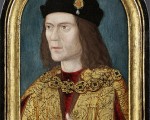
On this day in history, 2nd October 1452, Richard III, the last Plantagenet king, was born at Fotheringhay Castle, Northamptonshire.
Richard was the youngest surviving child of Richard, 3rd Duke of York, and Cecily Neville. Richard claimed the English throne in June 1483, claiming that his brother Edward IV’s sons were illegitimate because Edward had been pre-contracted to another woman when he married Elizabeth Woodville. Richard III was killed at the Battle of Bosworth on 22nd August 1485, and Henry Tudor claimed the throne as Henry VII.
[Read More...]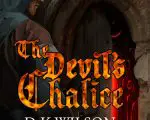
Historian Derek Wilson has done so much to support the Tudor Society and I just wanted to let you know about his new book, a historical thriller called The Devil’s Chalice, which is based on a real-life Tudor crime and is set in 1549, the year of Kett’s Rebellion. It is a wonderful read and I’m so pleased that Derek chose to publish it through MadeGlobal. It was so lovely to meet him at “An Evening with the Authors” on Saturday night and to be on the Henry VIII and Six Wives panel with him – quite an honour!
[Read More...]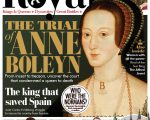
Ok, so I’m tooting my own horn now, but I am really excited that my article on the trial of Anne Boleyn is the feature article of this month’s History of Royals magazine (issue 7). They’ve laid it out beautifully and I’m very happy with it. Historian and Tudor Society supporter Derek Wilson also has an article in it, his is about European women who “challenged the patriarchy” and is an excellent read.
[Read More...]
As you will know, I’ve just come back from London so I’ve got lots to tell you and will be writing all sorts of articles and sharing photos over the coming weeks. In this Claire Chats video, I give you a little taster of what I got up to.
[Read More...]
Anna von Kleve, from the line of von der Marck (Germanic) or LaMarck (Francophone), fourth wife of Henry VIII and most commonly known as Anne of Cleves, is known to have shared the lineage of King Edward I of England with Henry’s other five wives. While an interesting anecdote, Edward I, or Edward Longshanks, Hammer of the Scots, died in 1307. In 1539, when Anna came to England to be Henry’s queen, she had many well-known powerful relations, distant though they were. Below, we will go through the genealogy of some of Anna’s royal connections.
[Read More...]
As today is the anniversary of Mary I travelling by barge to the Tower of London in preparation for her coronation, I thought I’d highlight the articles I wrote last year counting down to her coronation.
[Read More...]
On this day in history, 26th September 1580, Sir Francis Drake returned to England from his 3-year circumnavigation of the Globe, arriving at the port of Plymouth in The Golden Hind, which was laden with treasure and spices.
Drake had left Plymouth on his travels on 13th December 1577 with his fleet of five ships. Storm damage to two of his ships had delayed his departure. The purpose of this journey had been to sail into the Pacific and raid the Spanish colonies there. It was a secret mission authorised by Queen Elizabeth I, and investors of Drake’s mission included the Queen, Sir Francis Walsingham, William and George Wynter, Christopher Hatton and John Hawkins. Only one ship, The Pelican”, made it safely to the Pacific, arriving there in October 1578. As a tribute to its success, it was renamed The Golden Hind, after Sir Christopher Hatton’s coat of arms. Drake then sailed along South America’s Pacific coast, plundering towns and Spanish ports, and capturing Spanish ships laden with gold, silver and jewels.
[Read More...]
This week, Rebecca tests out knowledge of Jane Seymour, second wife of Henry VIII and mother of Edward VI. Good luck!
[Read More...]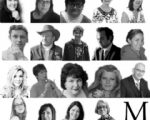
As you know, Tim and I are going to be in London on Saturday night for MadeGlobal Publishing’s “An Evening with the Authors” along with Tudor Life magazine contributors like Gareth Russell, Kyra Kramer, Jane Moulder, Beth von Staats, Melanie V Taylor… and lots of other authors and historians from the medieval and Tudor world (well, modern day world!).
[Read More...]
The second book in our series of Tudor Monarchs e-books is now available for Tudor Society members to download.
Articles from a wide variety of authors and historians take us through the fascinating life and times of Henry VIII.
[Read More...]
On this day in history, 22nd September 1515, Anna von Jülich-Kleve-Berg, or Anne of Cleves as we know her, was born near Düsseldorf. She was the second daughter of John III, Duke of Jülich, Cleves and Berg, an important German ruler, and his wife, Maria of Jülich-Berg.
[Read More...]
Jane Seymour, the third wife of Henry VIII, is an intriguing character. In this month’s Tudor Life magazine our experts examine many interesting aspects of her life.
[Read More...]
On the morning of Sunday 21st September 1578, between seven and eight o’clock, Robert Dudley, Earl of Leicester, married Lettice Devereux (née Knollys), widow of Walter Devereux, Earl of Essex, at his house in Wanstead, Essex.
Leicester’s chaplain, Humphrey Tindall officiated, and the guests at this secret and private ceremony included Sir Francis Knollys, father of the bride; Richard Knollys, the bride’s brother; Ambrose Dudley, Earl of Warwick and brother of Leicester; and Leicester’s friends, the Earl of Pembroke and Lord North.
[Read More...]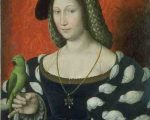
On 24 February 1525, the Battle of Pavia was fought as part of the Italian Wars that began in 1521 and ended in 1526. The French troops, led by King Francis I, fought against the Holy Roman Emperor Charles V’s Imperial army, which was reinforced by Spanish troops. The battle lasted around four hours, with the French taking heavy casualties. Francis himself was taken captive and eventually forced to sign the Treaty of Madrid. It also decisively removed the French threat to Hapsburg Italy.
[Read More...]
In this edition of Tudor Cooking with Claire, I make Lombard Slices, also known as Leche Lombarde, a medieval sweetmeat. In the video, I read the original recipe which is found in Two Fifteenth Century Cookery Books and here it is:
“Take fayre Hony, and clarifi yt on the fyre tylle it wexe hard, then take hard yolkys of Eyroun, & kryme a gode quantyte ther-to, tyl it be styf y-now; an thenne take it vppe, & ley it on a borde; then take fayre gratyd Brede, & pouder pepir, & molde it to-gederys with thine hondys, tylle it be so styf that it wole ben lechyd; then leche it; then take wyne & pouder Gyngere, Canelle, & a lytil claryfyid hony, & late renne thorw a straynour, & caste this Syryp ther-on, when thou shalt serue it out, instede of Clerye.”
[Read More...]
Olga Hughes, who you will know from her regular column in Tudor Life magazine, has kindly offered to run a live chat on Elizabeth Woodville on the Tudor Society chatroom on Friday 7th October (or Saturday 8th depending on your time zone). This will be an informal chat, like the one we had this month of Henry VII, and will be a chance to get together and discuss this queen consort of Edward IV.
[Read More...]
Today is the anniversary of the death of Katherine Willoughby, Duchess of Suffolk, who is also known by her married names of Brandon and Bertie.
[Read More...]
MedievalCourses.com has just launched a new course by Gareth Russell, editor of the Tudor Society’s Tudor Life magazine and author of The Emperors: How Europe’s Rulers Were Destroyed by the First World War, A History of the English Monarchy: From Boadicea to Elizabeth I and the forthcoming Young and Damned and Fair: The Life and Tragedy of Catherine Howard at the Court of Henry VIII.
Although I’m biased, being involved in MedievalCourse.com, I can hand-on-heart say that this is an excellent course. Gareth has done a brilliant job in creating and narrating each of the seven units and what I really love about this course is that he doesn’t look at the same old topics regarding these wives, he “uses each wife to explore a different aspect of monarchy in Tudor England” and then finishes with a unit considering why these women remain so popular and how they have “been re-invented and revitalised by the age of Hollywood, television and best-selling novels”. Bravo, Gareth, you’ve done a wonderful job!
[Read More...]
This week’s quiz from Rebecca Larson is a general Tudor history quiz. Good luck and enjoy!
[Read More...]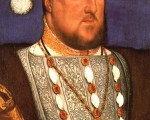
On this day in history, 18th September 1544, Henry VIII rode triumphantly through the streets of Boulogne after the French surrendered, ending the Siege of Boulogne, which had started on 19th July 1544. The English forces then set about fortifying the town.
[Read More...]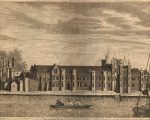
In today’s Claire Chats video I share with you my latest book buy – a transcript of building work that was carried out at Greenwich Palace between September 1532, after Anne Boleyn had become Marquis of Pembroke, and September 1533, after she’d become queen and given birth to her daughter, Elizabeth I, at the palace.
[Read More...]
On this day in history, 14th September 1538, the Shrine of Our Lady of Caversham, near Reading, was destroyed by Dr John London, on the orders of Henry VIII. The shrine had been established in 1106.
London wrote to Thomas Cromwell on 17th September to confirm the shrine’s destruction:
“Has pulled down the image of Our Lady at Caversham, whereunto was great pilgrimage. It is plated over with silver. Has put it in a chest fast locked and nailed up, and will send it by next barge to London. Has pulled down the place she stood in with the lights, shrowds, crutches, images of wax &c. about the chapel, and defaced the same thoroughly. This chapel belonged to Notley Abbey and there was always a canon of that monastery warden of Caversham, who sang in chapel and had the offerings. He was accustomed to show many pretty relics, among others the holy dagger that killed King Henry, and the holy knife that killed St. Edward. All these with the coats of this image, her cap and hair, my servant will bring your Lordship next week. Has sent the canon home to Notley and made fast the doors of the chapel, the lead of which, if desired, he will make sure for the King: otherwise it will be stolen by night,—as happened at the Friars, where they took the clappers of the bells, and but for the aid of Mr. Fachell and the mayor they would have made no little spoil. Reading, 17 Sept.”
[Read More...]